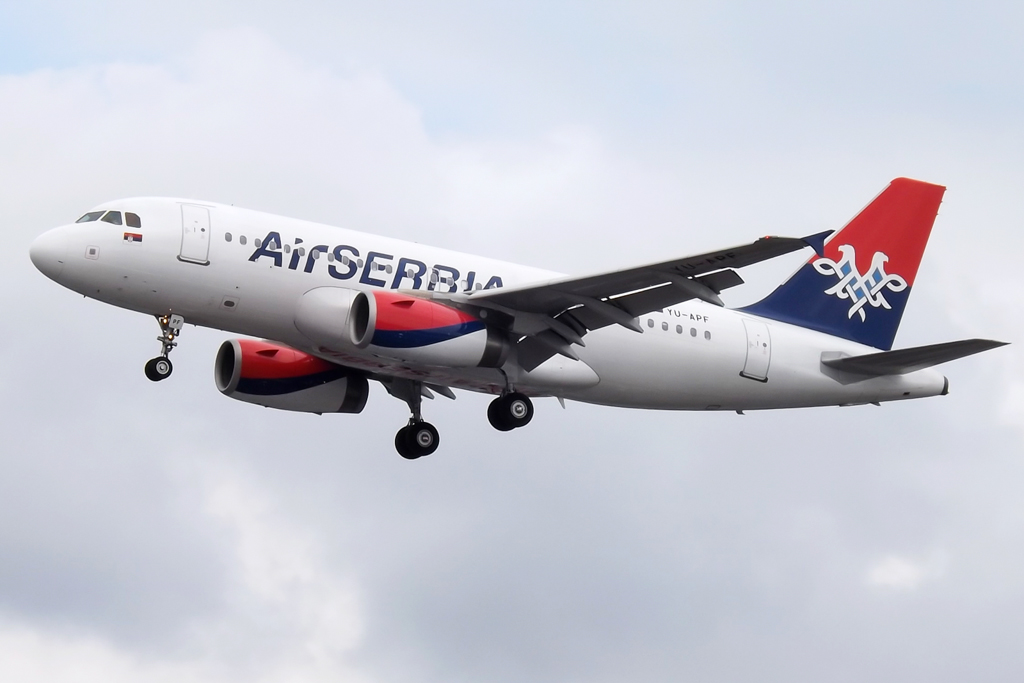Modernization of Serbia's Transportation System: Part 1. Aviation
In
Login if you are already registered
(no votes) |
(0 votes) |
Ph.D. in History, Senior Research Associate, RAS Institute of Slavonic Studies
Reconstruction of the national transportation infrastructure is a staple of the Serbian government and its head Aleksandar Vučić, as seen from the current and future plans for state development. Russian corporations, primarily Russian Railways, are also participating in offering concrete substance to the 2013 bilateral agreement on strategic partnership.
The problem is broadly defined, because the transportation network of Serbia and Montenegro suffered most from the breakdown of the former Yugoslavian economic and political ties, which destroyed previous economic purposes. Of course, the country also suffered from the destruction of bridges and highways as a result of NATO's 1999 attacks [1].

Flickr/ Mark Harkin
YU-APF A319 Air Serbia
As far as the individual republics are concerned, it was Croatia that was the first to remember communication lines and modernize highway infrastructure in the 1995s with German and French investments. The project created a fairly modern road network to connect Zagreb with critical cities and regions that had been prone to autonomy but now appear much more united.
Serbia is facing the same problems, having areas with independent tendencies, among them autonomous territory Vojvodina and Raška-Sandžak. Huge problems arise from seized Kosovo and neighboring Montenegro which emerged after voluntary-cum-forcible division in 2002-2006 but retains a major role for Serbian economy and security.
After the establishment of the Zagreb Airlines (now called Croatian Airlines) and the emergence of national carriers, the importance of the JAT (Yugoslavian Airlines), sometime ago a major European company, trended downwards. In the 1990s, the corporation ran into a material and existential crisis, having lost some of its routes and suffering from a rise in fuel prices. Rhe state-financed firm spent much of the 2000s in a state of the crisis.
Beginning from 2008, the Serbian government has attempted to privatize JAT, even by bringing down the price, and in August 2013 found Etihad Airways as a willing buyer. As a result the Arab investor received 49 percent of the shares, while about the same time purchasing stakes in Air Berlin and Alitalia. The Serbs have fully renovated the material base and received a five-year development plan, with the company becoming Air Serbia.
A member of a powerful international alliance, Air Serbia has access to 147 global routes, including the Middle East and the United States, and revived practically all regional routes. A much more potent carrier, the company has entered into a lucrative agreement with the Montenegrin air carrier. The action also has a political meaning, in symbolizing that Serbia has come out of the international cold. In 2014, the first flight in 23 years between Belgrade and Zagreb took place, and in June 2016 Air Serbia became the first regional company to fly to New York. The route was opened after Mr. Vučić's visit to the U.S. in June 2015 and on the eve of Vice President Joe Biden's arrival to Serbia on August 16, 2106.
The seemingly ideal contract has reservations in view of its terms. According to the agreement, Serbia had to oust the company's CEO, fire 1,300 workers and accept the USD 200-million debt, as well as to agree on disproportional financing, investing USD 90 million while the Etihad provided only USD 40 million. More problems came from the relationship with the Belgrade airport. The carrier owes it USD 22 million but the government, possessing 83 percent of the airport shares, insists on writing it off. Instead, the powerful brand came, plus with the five-year plan and self-repayment hopes to get the money back.
Shortages are periodically politicized but overwhelmed by promising financial reports, as in 2014 the carrier for the first time earned a profit in the amount of euro 2.7 million and appears to be growing.
The purchase appears quite an asset for the Arab company. For Serbia, the company has become a brand and part of an image of the country in transition, although time and political stability are required to convert the investment into permanent profitability.
1 1. Serbia and Montenegro had 22 bridges ruined and 12 damaged, as well as seven railway stations, six airports, plus many highways. See E.Yu. Guskova. The History of the Yugoslav Crisis. Moscow, 2001. P. 677
(no votes) |
(0 votes) |




